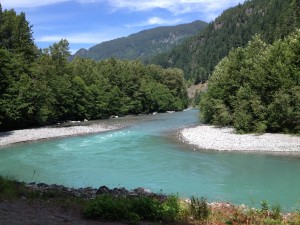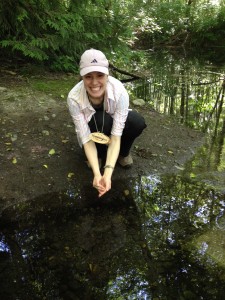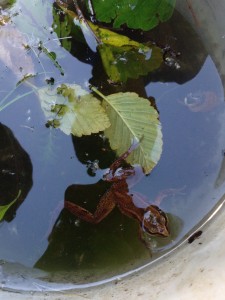Birds chirping, rivers flowing, and trees rustling are the sounds that I awaken to at the outdoor school (or camp as the students call it). It is a secluded destination that is tucked away off the highway in Squamish. The school has many outdoor educational programs offered for elementary students that allow them to engage, learn and explore the natural world.
It is a secluded destination that is tucked away off the highway in Squamish. The school has many outdoor educational programs offered for elementary students that allow them to engage, learn and explore the natural world.
The outdoor school is the home of my three weeks Community Field Experience (CFE). After one week, I knew that I could not have selected a better CFE location, as there is something about being surrounded by nature and the mountains (as if they are hugging me) that makes me feel at home. Throughout my high school education, I was fortunate to be part of an outdoor school program; however I wish that a program such this one had been offered during my elementary school years. I believe that it is extremely important for students to interact, appreciate, and respect nature at an early age.
During my first week at camp, I was reminded of the importance of hands-on experiential learning. In today’s world, technology has changed our society so much that we can now perform “dissections” of frogs on a SMARTboard rather than by hand. Although this is wonderful to think that we can do this, we have lost the “messy” prt of learning that is often the most powerful and rewarding for students. This week I was able to observe students in many hands-on learning experiences. I especially enjoyed observing and helping students at the Salmon hatchery. Not only did we review the salmon life cycle through hands on models, but also students were able to observe and interact with the salmon’s actual habitat. Each student including myself had the opportunity to release a salmon fry!
So why is hands-on experiential learning so important?  In my opinion, it promotes curiosity and inquiry. I was amazed at all the wonderful questions that students came up with during our trip to the salmon stream.
In my opinion, it promotes curiosity and inquiry. I was amazed at all the wonderful questions that students came up with during our trip to the salmon stream.
Hands-on learning also promotes students’ ownership as they gain a sense of authority and responsibility while they are engaging with their peers. Lastly, it is extremely exciting and students are able to remember and reflect on their learning in a more meaningful way to make connections. For example, when we had an end of the week reflection, for the students in my cabin many included releasing salmon as one of their favourite memories.
During my practicum, I made it one of my goals to incorporate hands-on learning into my lessons and my CFE experience has only confirmed the many benefits of this style of teaching. The CFE has also shown me the importance of outdoor hands-on learning therefore, as I enter the teaching profession I will make it a priority to include more outdoor classroom opportunities.  It gives students personal experiences that are able to last much longer than a worksheet. I learned that turning off technology is extremely important, as students were able to be entertained without a YouTube clip or video to introduce the content. Instead of being entertained by technology students were engaging with their peers and nature! Overall the first week was busy yet entertaining and rewarding to see the positive benefits of hands-on learning in nature!
It gives students personal experiences that are able to last much longer than a worksheet. I learned that turning off technology is extremely important, as students were able to be entertained without a YouTube clip or video to introduce the content. Instead of being entertained by technology students were engaging with their peers and nature! Overall the first week was busy yet entertaining and rewarding to see the positive benefits of hands-on learning in nature!
